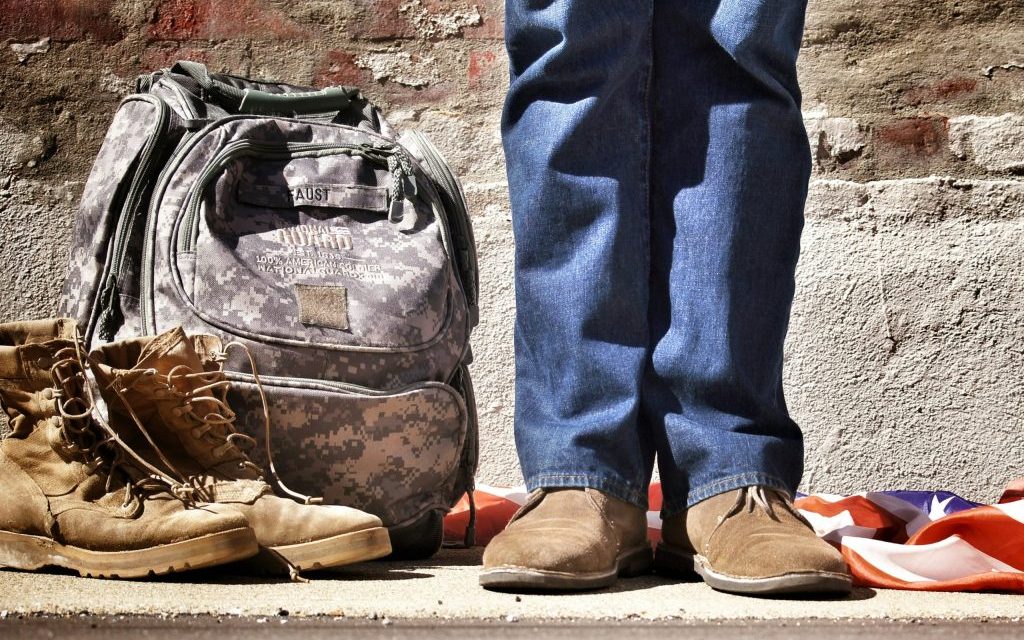By Shaela Foster
Special to the AFRO
Roughly 200,000 service members transition from military life to civilian life each year, according to the U.S. Department of Veterans Affairs. Serving in the military can be demanding, but transitioning to civilian life comes with its own challenges.
According to the VA, common challenges include preparation to enter the workforce, creating community, adjusting to providing oneself with basic necessities and adjusting to a different pace of life and work.
Service members choose to begin the civilian life transition for various reasons like injury, medical issues and honorable or dishonorable discharge, according to John D. Sawyer, Director at the United States Government Accountability Office (GAO).

At GAO, Sawyer works for the education, workforce and income security team while overseeing work involving civilian transitions.
Sawyer said that military service provides structure, from the time a servicemember wakes up to the time they retire to bed. This can pose a problem once members of the Armed Forces transition into the regular world.
“You have to sort of be in charge of your own fate or your choices that you make and sometimes assistance is needed in those areas,” said Sawyer. “Start the planning process now to see where you would like to land once that transition date occurs.”
According to Military One Source, an official Defense Department website, it states the Defense Department “recommends retirees begin the transition process at least two years prior to retirement.”
Major Damon N. Knauss, Active Duty Army Officer and Professor of Military Science at Morgan State and Coppin State University Senior Reserve Officers’ Training Corps program, agrees with the notion of preparing beforehand.
He states someone should take the time to understand what they’re trying to do next, setting themselves up for success through programs and internships at the end of their career.
A program he points to is the Soldier for Life program, where according to the U.S. Army Soldier for Life website, “retirement is a process, not an event.”
It states Army service members can plan and prepare for retirement 24 to 36 months before their retirement date.
On their website, they provide guidance on finding employment, applying for education programs, health and wellness advice and a toolkit for an Army retirement.
When planning early, Sawyer states you’re able to start “populating knowledge” that is needed in the decision making process helping to inform further decisions to be prepared for the transition.
In addition to preparation, Knauss advises service members to utilize their network to help find employment. He states he’s a firm believer in “it’s not what you know, it’s who you know and who knows you” adding that family members are part of someone’s network.
“I think a lot of angst comes from people that are applying constantly for online jobs and not hearing back,” he said.
Knauss understands the job search will be difficult but adds that alongside tapping into their network early, understanding their individual skills, military members should begin creating flexibility for themselves before their transition date.
He states service members should try to pay off as much of their bills as possible while simultaneously saving money that could withstand a few months during the job search.
All of these things add to the main point of preparation.
Sawyer adds that if family members are available, to rely on them and the ones that aren’t blood related especially if they are trustworthy and have the service members best interest at heart.
“There is a significant preparation that is needed to transition,” he said. “Not all of those who are transitioning are really prepared to handle that.”
Family members and friends don’t have to be someone’s first point of contact, Knauss states members should be upfront and honest with their leadership as they can help create flexibility and provide guidance.
“What you need to do is develop a plan with them, get it in writing, get both sides to agree and then honor your end of the bargain and the other side will honor theirs,” he said.
Ensuring the plan is in writing helps prevent any gray areas, he states, and signifies that both sides fully understand and are committed to the plan during the transition process.
Alongside preparation and utilizing family members’ support, Sawyer emphasizes being aware of the various programs that are offered.
He highlights the Department of Defense’s Transition Assistance Program, Department of Veterans Affairs’ Transition Assistance Program otherwise known as TAP and the Department of Labor’s Transition Assistance Program.
All these resources are set up to assist service members through the process of adjusting to civilian life and tools needed to succeed in civilian employment.
“People are successful in the military because they show up at the right time, right place, in the right uniform with the right attitude,” Knauss said. “It’s no different in the civilian world. If you do those things, you’re going to be set up for success anywhere you go.”
The post On the outside: Adjust to civilian life after serving in the military appeared first on AFRO American Newspapers.










